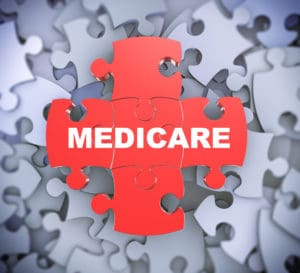CMS has provided 3 updates in the last 10 days to the MLN Matters document SE20011, with the latest on July 8th. Why is this important? This document contains the background and instructions for the Section 1135 Waiver authorized by Secretary Azar of the Department of Health & Human Services on March 13th in response to the Public Health Emergency (PHE), and it changed the way SNFs do business…at least temporarily.
The 1135 Waiver changed the technical requirements of coverage for Medicare Part A Skilled Nursing Facility (SNF) residents. With this Waiver, CMS waived 2 technical elements for Part A coverage:
- CMS waived the requirement for a 3-day prior hospitalization, in order to provide temporary emergency coverage of SNF services without a qualifying hospital stay, for those who experienced dislocations, or were otherwise affected by COVID-19.
- CMS authorized a renewal of SNF coverage for certain beneficiaries who exhausted their SNF benefits (used all 100 days) by renewing coverage without first having to start a new benefit period. In other words, the resident would be eligible for a new 100 days without meeting the 60 day spell of wellness requirement. This applies only to those who have been delayed or prevented by the PHE from commencing or completing the process of ending their current benefit period and renewing their SNF benefits.
Of important note, CMS did not change any of the Medicare Part A coverage criteria requirements, which can be found in Chapter 8 of the Medicare Benefit Policy Manual. To activate the Medicare Part A benefit and provide ongoing coverage, the resident must have a skilled need for nursing and/or rehabilitation as defined in Chapter 8.
For more information about the Waiver and SNF impact, please refer to our March article “Waiver Impact on SNF Part A…” . This article covers details on how the Waiver works for both the 3 day hospital stay and the 60 day spell of wellness.
So What Changed?
The bulk of the changes occurred in the June 26th update, followed by additional changes impacting the SNF on July 1st. {The July 8th changes targeted physicians.} The most recent MLN Matters document can be found HERE.
3 Day Inpatient Qualifying Hospital Stay (QHS):
CMS reiterated:
- All Medicare beneficiaries qualify for the waiver of the 3 midnight stay, regardless of whether they have SNF benefit days remaining
- Under the current PHE, the beneficiary’s status of being “affected by the emergency” exists nationwide, and the SNF does not need to verify individual cases
- Updated Billing Instructions: Use condition code DR on the claim to bill for the QHS waiver
Benefit Period Waiver (BPW) – 60 Day Spell of Wellness:
CMS devoted extra attention and detail to this section of the waiver, clearly identifying that use of this part of the Waiver would require specific documentation on the part of the SNF. CMS stated:
- To qualify, it must be demonstrated that continued receipt of skilled care is in some way related to the PHE. Those who are receiving ongoing skilled care in the SNF that is unrelated to the emergency do not qualify. If a resident receiving Part A services exhausts benefits and continues to require skilled care (ie: resident does not drop to an unskilled level of care due to qualifying G-Tube; or resident exhausts days for rehab of a stroke and has not yet met goals, requiring therapy to continue 5 days per week), they do not qualify because the 60 day wellness period is being prevented by something other than the PHE.
- A SNF resident’s ongoing skilled care is considered to be emergency-related unless it is altogether unaffected by the PHE, meaning, the beneficiary is receiving the very same course of treatment as if the PHE had never occurred. SNFs need to compare the course of treatment that the resident actually received to what would have been furnished absent the emergency, and unless the two are exactly the same, it could be determined that the treatment has been affected by the PHE, and the waiver can be utilized
- SNFs must fully document in the medical record that care meets the waiver requirements. The record may be subject to post payment review.
- Complete a new 5-Day PPS MDS and follow all PDPM rules. The variable per diem rates begin at Day 1 (for Day 101)
- All claims will be MANUALLY PROCESSED for the this waiver
- Updated Billing Instructions:
-
- Submit a final Discharge Claim with patient status 01 on the claim
- Readmit the resident using Day 101 to start the benefit period waiver
- Use condition code DR to mark the claim as related to the PHE
- Use condition code 57 for readmission in order to bypass the edits related to the 3-day stay being within 30 days
- Add “COVID100” in the remarks to identify the claim as a beefit period waiver request
- Track benefit days used in the benefit period waiver spell and only submit claims with covered days 101-200.
- Once the additional 100 days exhaust, follow existing processes to continue to bill no-pay claims until discharged. Identify no-pay claims for the BPW by using condition code DR and “BENEFITS EXHAUST” in the remarks field
- If you have billed and had claims rejected, see page 12 of the document for instructions
Please submit any questions you may have through our Just Ask Q&A Forum. Our team looks forward to assisting you!
In Your Corner,
Dolores Montero, PT, DPT, RAC-CT, RAC-CTA
SNF Rehab & MDS Compliance Team

